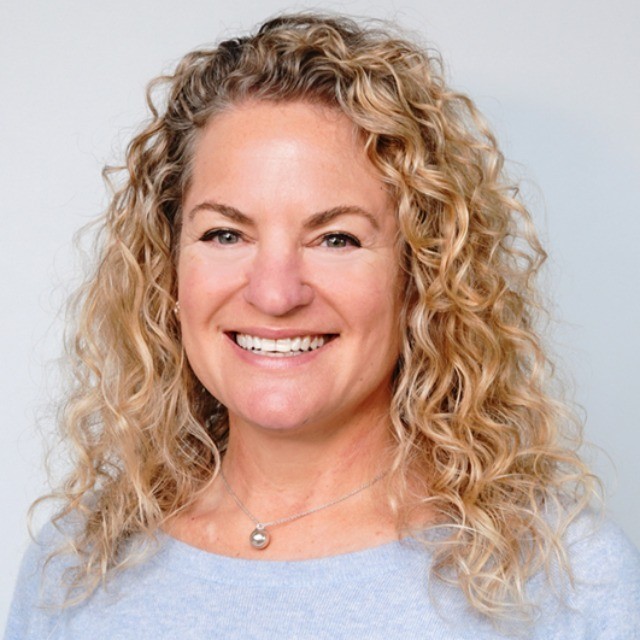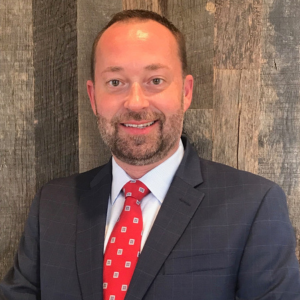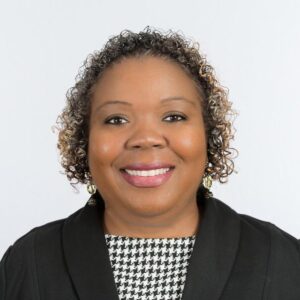How Senior Care Communities Are Using Intergenerational Programming to Build Connections
When Oak Trace Senior Living hosted its second annual Lego celebration, residents, their friends and families, and staff all came together to build Lego structures. They also built bonds – important bonds that spanned multiple generations.
“We really recognize and promote the importance of intergenerational programming,” says Jessica Lazzara Cashman, lifestyles director at Oak Trace Senior Living. While Lego serves to connect generations, it’s just one of many ways that senior care communities can use intergenerational programming to build relationships.
The Value of Intergenerational Programming

Jessica Lazzara Cashman, lifestyles director at Oak Trace Senior Living
“Intergeneration programming, for our residents, is good for mood, cognition and dexterity, decreasing stress and anxiety, and sharing quality time with loved ones,” Lazzara Cashman says. “It’s beneficial for the younger generation, too. All generations have things to learn from each other, important things, and having fun while doing so makes it even better.”
Paige Mantel, CMO of LifeLoop, explains that enabling residents and family members to maintain meaningful connections is essential to the senior living experience. “Creating a vibrant environment that feels like home is what it’s all about,” she says. “These communities work incredibly hard to provide exceptional care and fostering strong family connections is key to overall resident health and wellbeing. These are important relationships for residents to cultivate. Technology is one of the bridges that enables this, regardless of age or care setting.”
Lego: Building Bridges Between Generations
Lazzara Cashman explains that a resident originally suggested the idea for a Lego celebration because her grandchildren love to build Legos with her. “We love featuring intergenerational programs as they’re so much fun for everyone involved,” she says. “As a toy beloved across generations and genders, this seemed to be the perfect project.”
While the event draws family members, especially grandchildren, residents who don’t have young family members in the area also attend, often pairing up and building with each other. Staff members also participate, including some of the teen servers in the dining program who come and create with the residents.

Paige Mantel, CMO of LifeLoop
While the celebration is scheduled for one hour, attendees often stay longer and enjoy themselves. Residents are encouraged to invite their loved ones, and Oak Trace team members and their families are also welcome. The event is held in the community’s Great Hall, one of the shared spaces.
News of the event is shared via internal communications, including resident newsletters, calendars, flyers posted throughout the community, and floor meetings. “Truly, the event is so popular, our communication is supported through word-of-mouth too since the residents look forward to it so much,” says Lazzara Cashman.
It turns out that Legos are a powerful tool for forging intergenerational connections, and Lazzara Cashman says the Lego celebration is one of residents’ favorite events. “It’s interesting because Legos came to the U.S. in the early 1960s,” she says. “So some of the residents played with them as youngsters and played with them with their children through the years, too. They love reminiscing about Legos and being able to connect now with their grandchildren through them. And there’s no technology involved!” She notes that while the most recent Lego celebration was for residents in independent living and assisted living, it could be adapted for people in memory care, rehab, and skilled care, too.
In addition to the Lego celebration, the community promotes intergenerational programming in other ways. Schoolchildren come and visit with the residents. “Additionally, because of our newly completed performing arts center, we look forward to having recitals and performances here,” explains Lazzara Cashman. “We are always on the lookout for opportunities for intergenerational programs.”
Using Technology-Based Intergenerational Programming
Mantel explains that LifeLoop offers more than 6,000 pieces of digital entertainment content and experiences, including lifelong learning, entertainment, immersive travel, physical health, and more. “With the ability to display programming on large, shared screens or individual smart devices, community staff can easily turn content into shared activities. We see our customers leveraging these opportunities to create meaningful moments for residents and their visiting family members, interactions with our younger volunteers, and the staff themselves,” she says.
She notes that the most popular intergenerational events and activities are often the ones that instantly level the playing field for residents and younger generations to interact with one another. “Whether it’s a familiar game they can play together or conversation guides that stimulate storytelling and sharing, the content is specifically designed to enable experiences that are not restricted by age or aptitude,” Mantel says. “Some community favorites are games they can easily play together while having a conversation and learning more about one another, including digital puzzles, classic games, and brain teaser trivia. The LifeLoop platform also provides communities with curated guides for offline activities residents can do with visitors, such as crafting and easy cooking recipes. One of my personal favorites is the karaoke sing-along and dance content.”
Mantel notes that intergenerational connections can be particularly rewarding when residents and younger generations learn from one another. “One LifeLoop community invited local students to interview residents about their lives and history, and the students then developed what they learned into fascinating biographies,” she says. “We also hear about how residents connect with their long-distance children and grandchildren through livestreaming content where they can watch wildlife activity or visit destinations together and talk about it in real-time, all from the comfort of where they are.”
How Senior Care Communities Can Boost Their Intergenerational Programming
Lazzara Cashman notes that there is no downside to intergenerational programming, and recommends every senior care community implement it. She explains that in addition to loved ones and school groups, there are often service organizations, high school students who need service hours for graduation, people looking for volunteer hours, and young people exploring career opportunities who could all potentially participate in such programming.
Mantel encourages senior care communities to get creative with their intergenerational programming. “In addition to solutions like LifeLoop, there are many ways communities can incorporate intergenerational experiences into resident programming that are readily available and accessible,” she says. “Whether engaging local schools and volunteers to join residents for activities, or livestreaming interactive games and experiences with resident grandchildren, the key is creating the opportunity to have a shared experience. That’s something everyone can appreciate and find value in, regardless of age!”

Paige Cerulli is a contributing writer to i Advance Senior Care.
Related Articles
Topics: Activities , Featured Articles , Operations











